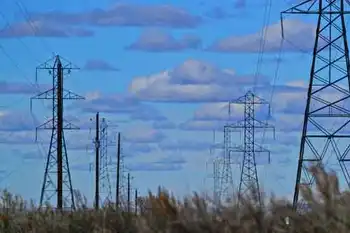No payoff in off-peak conservation
She made sure all the lights in her Scarborough home had energy-efficient compact fluorescent bulbs. She bought an energy-efficient gas drier.
And when she was switched to time-of-use pricing — in which customers are charged higher rates for using power during peak periods — she shifted almost 60 per cent of her consumption to the lowest-price periods of the week.
Yet she’s now paying an average of 6.2 cents a kilowatt hour for electricity, while a year ago she paid 5.6 cents. (The price refers only to the “electricity” line of the bill. Delivery, regulatory and debt retirement charges are also added to make up the total price, but they don’t vary by the time of day.)
With most Toronto householder now on time of use rates, many are getting their first or second bills under the new system, and comparing the prices.
Some, like Seddon, are unhappy.
“I don’t like this new system,” she said. “It’s been promoted as if people are going to be rewarded for making an effort. But making an effort does not have any rewards.”
Ontario Energy Minister Brad Duguid said the main objective of time-of-use pricing is not to save consumers money, although some will achieve “modest” savings.
“But more important — and this is what the goal is — their time of use has shifted,” Duguid said in an interview.
The idea is to encourage consumers to use less power at peak times, when the power grid is under strain. Excessive demand can cause power failures.
High demand at peak times also forces power companies to build expensive generators that may run for only a few hours a day, a few months a year. The money to pay for those plants has to be built into the over-all price of power.
“Shifting time of use is a very effective and efficient way to save overall on our energy costs,” said Duguid.
“This is probably one of the most cost-effective ways... to keep our prices moderate, and our future building needs less than they otherwise would have been.”
The savings in Seddon’s three-person household — herself, her husband and son — are modest.
She cut her consumption of electricity by 13 per cent compared with the same period a year ago. Fifty-nine per cent of her usage is at the lowest rate; only 24 per cent at the peak rate. Yet her bill dropped only 4 per cent.
HereÂ’s how the numbers worked:
A year ago, she used 1,569.9 kilowatt hours in the billing period ending in early March, and paid 5.6 cents a kilowatt hour for a total of $87.91.
This year, she used 1,363.6 kilowatt hours during the same period. For 59 per cent of it, used at off-peak time, she paid 4.4 cents a kilowatt hour. For 17.6 per cent, she paid 8 cents a kilowatt hour. And for the remainder, at peak time — about 24 per cent of her total consumption — she paid 9.3 cents a kilowatt hour. The total: $84.38.
It works out to an average of 6.2 cents a kilowatt hour this year — or 10.7 per cent more per kilowatt than the rate she’d paid a year ago.
What irked her was a brochure she got with her bill stating: “Time-of-Use pricing rewards you for using electricity during low-demand periods whenever possible.”
Seddon doesnÂ’t see it that way.
“A 10 per cent increase is not a reward,” she said. “It’s another money grab. I’d rather they just said: ‘We’re hiking rates,’ and not: ‘If you’re an ecologically responsible person we’re going to reward you.’ They’re not.”
“To keep your bill at the same level, you have to use extreme measures.”
But Duguid said pilot projects in several Ontario communities show that the new pricing system does achieve the objective of lowering peak use: “It appears to be working really well.”
“It’s creating awareness — the fact that we’re using energy and there’s a cost to that,” he said. “Number two, it is shifting time of use, which is a very effective and efficient way to save overall on our energy costs.”
In Toronto, with 580,000 residential customers, 460,000 are now on time-of-use rates, according to Toronto Hydro.
Although some consumers like Seddon who have pored over their bills are unhappy with the new system, Toronto Hydro says it hasnÂ’t seen an increase in complaints as time-of-use bills flow out.
Customers who donÂ’t want to pay time of use rates can escape them by signing a contract with an energy retailer at a fixed price.
Related News

Energy groups warn Trump and Perry are rushing major change to electricity pricing
WASHINGTON - A coalition of 11 industry groups is pushing back on Energy Secretary Rick Perry's efforts to quickly implement a major change to the way electric power is priced in the United States.
The Energy Department on Friday proposed a rule that stands to bolster coal and nuclear power plants by forcing the regional markets that set electricity prices to compensate them for the reliability they provide. Perry asked the Federal Energy Regulatory Commission to consider and finalize the rule within 60 days, including a 45-day period during which stakeholders can issue comments.
On Monday, groups representing petroleum, natural gas, electric power and…





